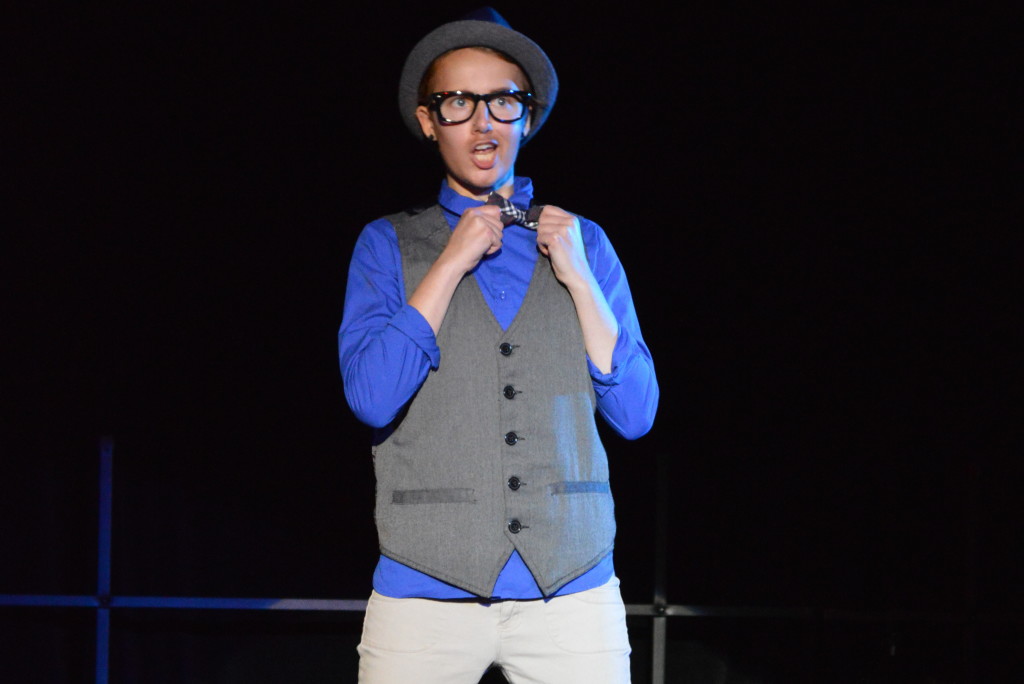
NAOMI LYNCH
Social Media Manager
Two weeks ago, Pride Alliance held its annual Fall Drag Show. A popular event on campus, it traditionally features men dressing up as drag queens and women dressing up as drag kings to compete for the title of Mr. and Ms. Drag Fredonia. Drag has long been used as a form of gender expression, and has grown beyond clubs to national television, thanks to “RuPaul’s Drag Race” on Logo TV.
After Fredonia’s drag show, Mr. Drag Fredonia winner JP Makerquake answered a question not so often heard in the community: is there a market for drag kings?
“In the performance world? No, not really,” Makerquake said. “There’s RuPaul’s show that is centered on [drag queens]; I think there might have been a few male performers, but honestly, it’s dominated by the queens.”
Beyond Fredonia, many haven’t seen drag queens especially kings before. Is there any space for women in the drag world besides being kings and spectators?
Let’s start with the basics: what is drag?
“Drag is anything you want it to be,” said Ken Olsen, a Fredonia alumnus with a B.A. in history. “Normally drag has been identified as a person impersonating someone of another gender but it’s more complicated than that — drag is however you present the truest form of yourself to others.”
“[Drag] is donning a different persona. It gives people the chance to perform as the opposite gender,” said Kaitlin Tachibana, junior social work major.
Drag didn’t start with RuPaul. It didn’t even start in the ‘80s. Olsen explained that in Shakespearean England, women were barred from performing on stage. The male actors portrayed the female characters, and there’s no proof if these men were “gay” or not.
“The Medieval Ages icon Joan of Arc during her time in The Hundred Year’s War portrayed herself as a man before being discovered as a woman and leading French soldiers against the English,” said Olsen. “It really isn’t until around the Victorian Era that drag [became] more associated with gay men.”
“Drag is most notable for having men dress up as women because of a more ‘general acceptance’ for it. If women dress up like men, [they] may be criticized more heavily for it,” Olsen says.
Olsen gave the example of a tomboy: usually a young woman who displays attributes associated with young men. This girl is judged by those who believe she should have more of a domestic and dainty role. Traditionally, girls are the caretakers and men are the breadwinners, and any deviation from the established norm is a problem.
Caiden Igoe, a 20-year-old music education major, transformed into drag king Oliver Clozoff for this semester’s drag show. Igoe prefers to be referred to with “they” pronouns instead of masculine or feminine pronouns. While Clozoff is a crowd favorite, they do agree that the audience is sparse for kings.
“They’re not seen as often as queens are,” they said. “I mean, personally, I believe that I’m appreciated as a king because I always have a bunch of friends who come and support me in the performance.”
The idea of having women doing drag is still fairly recent. Most women dress as up as drag kings, but there isn’t much of a following, especially not as strong as the queens. However, there are some women who choose to transform into drag queens. While strong opinions are formed on each side of the argument for women becoming drag queens (also known as “bio/faux queens”) Igoe doesn’t see a problem with it.
“I’m all about 100 percent inclusion of everyone in our diverse world,” they said. “Women should be able to do whatever they want to and if that means being a drag queen and performing on stage with other queens and kind, then by all means they should be able to.”
Tachibana agrees: “Drag reaches far beyond just gay men. I think it’s a stereotype that it’s often only gay men who do drag, but drag is more inclusive than that,” she said. “It’s a form of expression and I personally think that people should be able to express themselves however they please. Expression should be celebrated.”
But is the world ready for a primetime drag king celebrity? Olsen isn’t sure.
“There are certainly well-known and famous drag kings out there: Murray Hill, Dred [and] Spikey Van Dykey, among others,” Olsen said. “Unfortunately, like many women in history and social movements, they are glanced over and often forgotten.”
“But,” he continues, “there are drag kings out there, really good ones mind you, and I think it’s a combination that we’re not ready for a drag king celebrity, as well as we’re not allowing ourselves to see that side of drag, recognize it and enjoy it as much as we do with drag queens.”
